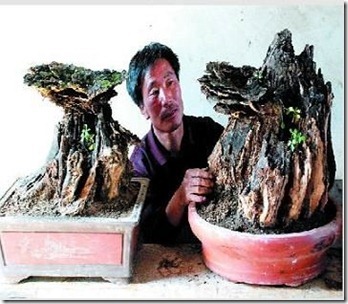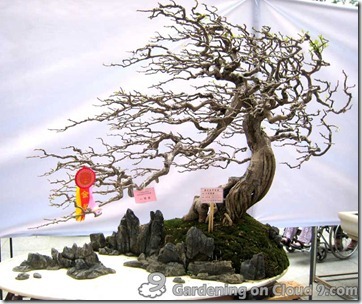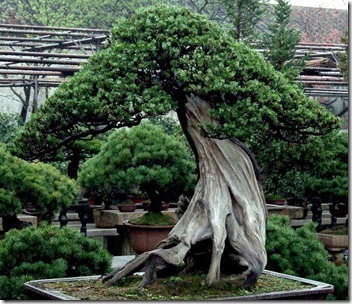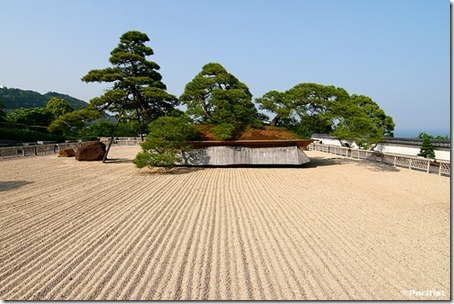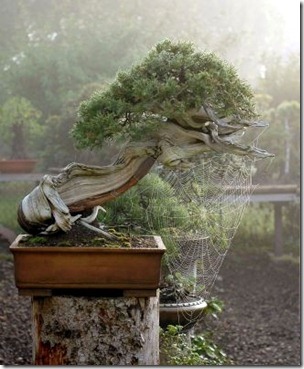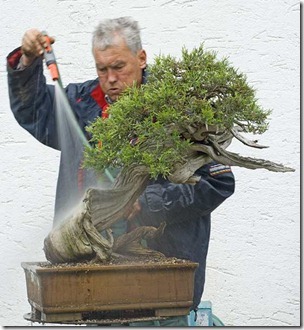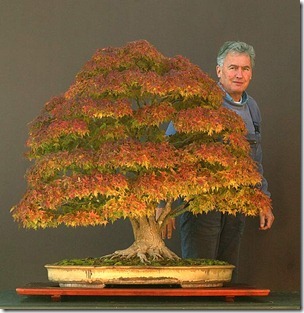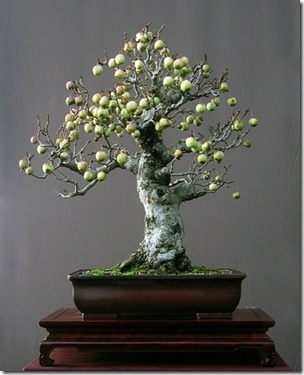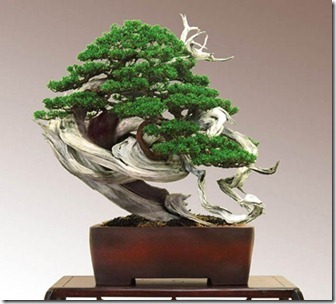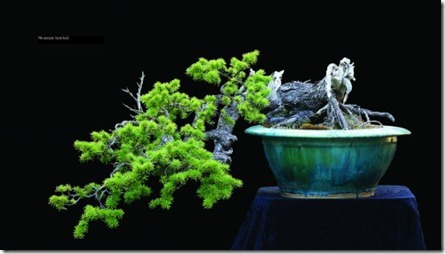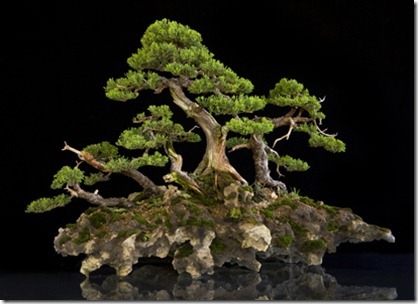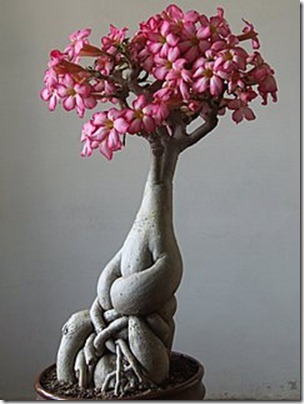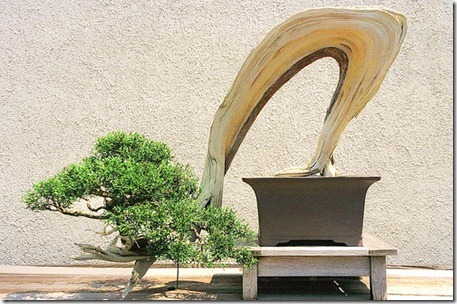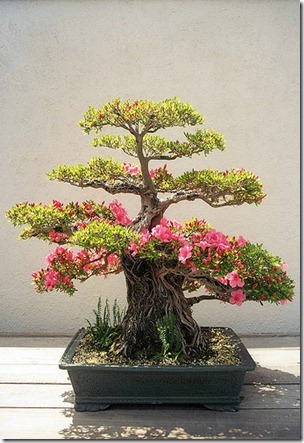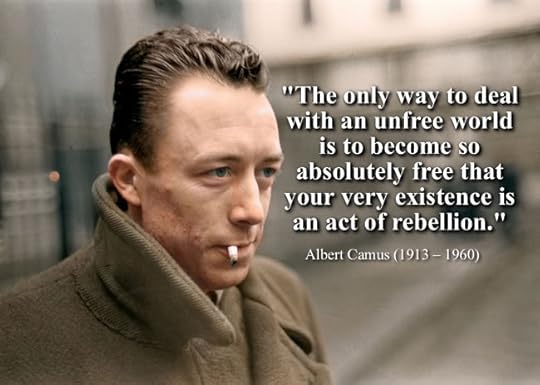Lawrence R. Spencer's Blog, page 433
September 19, 2016
A DIFFERENT WAY
THE POWER
“You’ve always had the power to go back to Kansas“–Glinda
“Oh Dear! That’s too wonderful to be true!“–Dorothy
“Now those magic slippers will take you home in two seconds. Just close your eyes and think to yourself, ‘There’s no place like home’.”–Glinda
“Then why didn’t you tell her before?“–The Scarecrow
“Because she wouldn’t have believed me. She had to learn it for herself.“–Glinda
“If I ever go looking for my heart’s desire again, I won’t look any further than my own back yard, because if it isn’t there, I never really lost it to begin with.“–Dorothy in ‘The Wizard of Oz”
Like Dorothy in ‘The Wizard of Oz’ we are creatures of our own design. We live in universes created by our own agreements and imagination. We are inside the Physical Universe looking out to find the origin of our being. We long for a place we feel certain must exist; a place where there is no trouble. We wait for wizards and witches to show us the way home. Yet we fear to close our eyes and click our heels to see the Universe Within.
Our journey home begins at the source of the rainbow; shining light upon our own eternal, ethereal selves.
The history of mankind seems blanketed in a simultaneous state of amnesia and deja vu. The ruins of ancient civilizations whisper a reminder that we have forgotten everything we knew.
A multitude of gods have shown themselves like shadows in the halls of history. We know not yet, except by our own observation and decision, which of them is real. We are betrayed by those who teach us that we must trust the Wizards of the West. While pretentious politicians defend the castles of the Witch, the media monkeys swarm to spin perverted lies to cover up their covert tricks.
The voiceless bones of wonderful wizards have dissolved to mortal dust once more. Their words have vanished in the smoke of sacred libraries, searing our souls with the stupefying stench of wisdom lost forever in their flames. From day to day the timeworn treadmill of survival forces us to worship at the soulless bankers’ shrine. Gold is still the god of the great and powerful Oz.
We have crash-landed in a twisted alien landscape of pain and mortality, far away from our home Universe. As a race we have amnesia. We are repeatedly bumped on the head by the recurring cataclysmic upheavals of a planet whirling in space like a farmhouse in a tornado.
The future is an extension of the present. We must live our lives in the present in a manner which will create the greatest good for the greatest number of beings in the future. If we are aware of our own past lives, we must also be aware that we are creating our own future by our present actions. We will inherit our own legacy.
As Professor Marvel points out with simple eloquence, “There are no other wizards…”

We are apparently the only wizards there ever were and the only wizards that ever will be. We are each a part of a time track of the past, present and future of our own creation, individually and collectively.
If we let the Wicked Witches run the culture now, they will be in charge of the place when we come back. Just as we are the descendants of past generations, you and I may very well become, through reincarnation, the children of our children–we are the future generations who will inherit the environmental and cultural conditions of the future which we ourselves are creating today.
Man has apparently been searching the stars for a way to leave the Earth and go “over the rainbow” to a place where there is no trouble.
Since before the beginning of our own dim primordial prehistory, we have been looking into the depths of our own immortal selves for a way “over the rainbow” back to YOUR OWN UNIVERSE–our own identity, simplicity and power as spiritual beings. This has been the dream of many religious philosophers throughout the ages.
We still have not solved many of the mysteries of the physical universe. However, we can CHOOSE to see what’s in it. We can CHOOSE to disagree with what we see. We can CHOOSE to agree to the creation of a new and better universe.
Dorothy and her friends have taught us a valuable allegorical lesson: Dorothy got herself into the Land of Oz, and she got herself back to Kansas, but she would not have made it without the help of her friends. If ever there will be a Yellow Brick Road, if ever there will be an Emerald City of which we can be proud, we must build it ourselves.”
— Excerpt from THE OZ FACTORS, by Lawrence R. Spencer
Originally posted 2011-07-09 22:02:15. Republished by Blog Post Promoter
September 18, 2016
15 Best Bonsai Trees
1. World’s Smallest Bonsai Tree
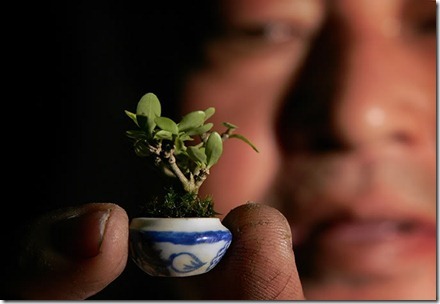 What’s smaller than a miniature tree? A miniature miniature tree. This masterpiece measures 22mm and it was obtained from a Malaysian local species called “water jasmine” – the only species that can apparently be made so small. Creator Kuah Tee Teong claims that it may be the world’s smallest bonsai, since the standard measure of a miniature bonsai is 10cm. Kuah doesn’t strive for popularity and didn’t register his creation in the Worlds Book of records, neither is he planning to sell his tiny trees. His philosophy: ‘’If I sell, then I’ll have nothing to show.” He also prunes animal shaped trees that look like dogs, snails or octopuses.
What’s smaller than a miniature tree? A miniature miniature tree. This masterpiece measures 22mm and it was obtained from a Malaysian local species called “water jasmine” – the only species that can apparently be made so small. Creator Kuah Tee Teong claims that it may be the world’s smallest bonsai, since the standard measure of a miniature bonsai is 10cm. Kuah doesn’t strive for popularity and didn’t register his creation in the Worlds Book of records, neither is he planning to sell his tiny trees. His philosophy: ‘’If I sell, then I’ll have nothing to show.” He also prunes animal shaped trees that look like dogs, snails or octopuses.
2. Music from a Bonsai
Diego Stocco is not a bonsai grower, hasn’t won any bonsai competition award, but he is, in his own unique way, a bonsai lover and tamer. He bought a bonsai tree and made it sing, proving that you actually can teach an old bonsai new tricks. Using a Røde NT6 microphone, some tiny transducers and a customized stethoscope, Stocco recorded an experimental piece played exclusively by the bonsai’s small leaves and branches. He also used a piano hammer, a paint brush and different bows to obtain different sounds from the tree. Don’t be scandalised if it seams from this video that he is somehow torturing the poor little tree. No bonsai was damaged during the experiment and, as you know, art demands sacrifices.
3. Rare Ganoderma Bonsai
This is an extremely rare ganoderma lucidum cultivated bonsai, with an impressive diameter of 90cm. The successive layers and crown shaped cap make it unique in the world.
Known as “”fairy herb”, Gandorema lucidum has been used for medicinal purposes in traditional Chinese medicine for more than 2000 years. It is one of the oldest mushrooms to have been used in disease treatments and , due to it’s presumed health benefits and apparent absence of side effects, it is known as one of the most powerful herbal substance in East Asia. In Chinese culture, it is also considered a good luck, beauty and longevity charm. The plants health benefits and spectacular shapes and colours saved it an important place on the bonsai market as well.
4. Awarded Penjing Landscape
“Penjing” is the Chinese extension of bonsai art and it can be literally translated “landscape in a pot”’. The chines art focuses more on creating a convincing miniature landscape than shaping the perfect miniature tree as Japanese bonsai growers strive to obtain. Nonetheless, the value of an awarded penjing is given by the way it looks with naked branches, when not attired in fabled leaves and flowers. The assembly in the image is called 大風驚濤, which literally means “harsh wind severe waves” and it was awarded at the Guangzhou Penjing Exhibition in China, the biggest lingnan (southern style) penjing exhibition since the founding of the country.
5. The Oldest Bonsai Trees
The oldest known bonsai trees still living can be found in a private restaurant garden in Tokyo, Japan. The 400 to 800 years old trees in Happo-en Garden ar an attraction for any bonsai lover visiting Tokyo. Every tree is grown in era-specific pots that are often as valuable as the trees themselves.
The practice of potted trees gose way back to the Egyptian Era, 4000 B.C. Inhareted images depict miniature trees cultivated in rock containers. Pharaoh Ramesses III is known to have donated several olive trees and other miniature plants to various temples. In the Indian Pre-Common Era several plant species were grown in a “”bonsai manner” for medicine and nutrition purposes.
6. World’s Biggest Bonsai Tree
This 600 year old Japanese bonsai is presumably the biggest bonsai tree in the world, according to the staff of Akao Herb & Rose Garden in Atami, Japan. Sure, the title is somehow paradoxical since the main quality of bonsai trees is being small. But, after all, if bonsai means “tree in a pot” it doesn’t metter how big the pot is, especially if it contains an impressing 5 meter tall and 10 meter wide ancient red pine bonsai like this one.
7. Walter Pall’s Rocky Mountain Juniper
Walter Pall is a kind of bonsai rock-star among the culture’s enthusiasts. He has received several dozens national and international awards for his beautiful, dramatic bonsai. He has won the most prestigious Crespi Cup Award of Italy for his well known Rocky Mountain Juniper, and has come in among the top six, every time he has entered. He has also won second and third and other places places in the Gingko Cup Awards of the Belgium bonsai competition held every two years. The most controversial information about Walter pall is that, although world renown, he considers himself an amateur working professionally. That’s because he styles trees for his own amusement and not for commercial purposes. In time he managed to put together one of the most comprehensive bonsai collections around.
8. Walter Pall’s Acer Platanus
Another famous piece from Walter pall’s collection is this Sycamore Maple that won the Bonsai Today / Art of Bonsai Photo Contest. Pall was one of the first Europeans to work with indigenous species, which he collects in his beloved Alpine mountain.s He now owns a collection of about 1000 quality trees in varying stages of development and keeps a store reserve of about 1000 handmade pots to compliment the bonsai. Besides his famous conifers he is also well known for his beautiful deciduous trees. Walter’s bonsai usually are strong, powerful trees which he frequently forms in natural shapes. The longer he has been involved with tree development, the more he has moved away from traditional bonsai styling to his own concepts of design.
9. Walter Pall’s Crab Apple Tree
This is my personal favourite from Pall’s collection: an incredibly sweet 65 cm high apple tree. I have no idea how anyone that sees it live could resist not to taste those tiny apples, but I guess Mr. Pall keeps it in a safe place, away from leering guests. Fruit trees training is an ascending trend among bonsai growers. The fascinating part about it is that the fruits are indeed edible, especially those belonging to the citrus category. Common fruits that can be obtained in small size include: cherries, apples, lime, lemons, tangerine and figs. The bonsai fruit tree success strongly depends on meteorological and topographical factors, like humidity, temperature and soil.
10. Awarded Chinese Juniper “Itoi-gawa”
The Chines Juniper is a very loved and popular tree among bonsai professionals and amateurs alike. Due to the woods malleability, it can be stylised into beautiful and interesting shapes. Like this one belonging to Enrico Savini from Italy, that has won several awards, including Ben Oki International Design Award in 2003 and Bonsai Clubs International People’s Choise Award 2008. Savini says he fell in love with bonsai art at age ten and his first tree, a Prunus mume that only survived a few months, was a gift from his grandma. “ I couldn’t forgive myself for that failure, so I took it as a personal challenge, my entire career has been a continuous personal challenge.”
11. Dan Robinson, The Picasso of Bonsai
This perfect Mountain hemlock expresses Dan Robinson’s virtuosity as a bonsai artist and his respect for the nature’s own ways. Known as a pioneer in bonsai art, or as the Picasso of bonsai, he practices an preaches techniques inspired by the ancient Japanese ways. This is one of the many amazing captures pictured in the book Gnarly Branches, Ancient Trees: The Life and Works of Dan Robinson – Bonsai Pioneer made ]n collaboration with photographer Will Hiltz.
12. Awarded Junipero San Jose
This work of art belongs to Nacho Marin, a Venezuelan Fine Arts graduate who is fascinated by the infinite possibilities of taming and manipulating trees. In his quest to recreate a natural environment, he also takes great care so that the shape and mood of the final product reflects his artistic vision. No wonder that his Junipero San Jose won the flattering title of ”Most artistically innovative entry of all entries from all categories” at The Art of Bonsai Contest 2008.
13. Adenium Flower Bonsai
Not as popular as junipers, but unanimously loved for their delicacy and frailness, flower bonsais can come up in extraordinary forms. Mr. Jai Krishna Agarwal from india has about 100 specimens in his collections and he especially loves adenium flowers. Why? Because their trunks often remind the shapes of the human body . The effect is surrealistic to say the least, this beautiful example shown here brings to mind some elaborate fauvist sculpture.
14. Semi-cascade Juniper Bonsai
A Juniper bonsai collected, designed and developed by Harry Hirao and displayed at the National Bonsai and Penjing Mueseum at The United States National Arboretum. This very old, semi-cascade style bonsai was probably collected in the White Mountains of California. The shari (deadwood on the trunk) is very prominent on this bonsai, leaving only one stripe where the tree is connected between its leaves and the roots.
The esthetics behind this type of contorted and twisted trunk is called literati and it was influenced by the political and academic conditions in the Tang Dynasty period, when penjing was once widely practiced by the elites. Literati is a contemplative, lyrical style displaying tension (in the trunk) and release (in the cascading branches) like the universal law of Yin and Yang.
15. Beautiful Azalea Tree
An old Azalea, probably a Satsuki type, from the Collection of the National Bonsai and Penjing Mueseum at The United States National Arboretum. Azaleas bloom in spring, their flowers often lasting several weeks. In Chinese culture, the azalea is known as “thinking of home bush” (xiangsi shu) and is immortalized in old poetry and contemporary stories.
Originally posted 2011-05-23 22:01:35. Republished by Blog Post Promoter
September 17, 2016
ABSURDISM
Albert Camus — 7 November 1913 – 4 January 1960) was a French Nobel Prize winning author, journalist, and philosopher. His views contributed to the rise of the philosophy known as Absurdism. He wrote in his essay “The Rebel” that his whole life was devoted to opposing the philosophy of nihilism while still delving deeply into individual freedom. Camus did not consider himself to be an existentialist despite usually being classified as one, even during his own lifetime.
The Myth of Sisyphus
Despite his opposition to the label, Camus addressed one of the fundamental questions of existentialism: the problem of suicide. He wrote, “There is only one really serious philosophical question, and that is suicide. Deciding whether or not life is worth living is to answer the fundamental question in philosophy. All other questions follow from that” Camus viewed the question of suicide as arising naturally as a solution to the absurdity of life. In The Myth of Sisyphus, Camus seeks to identify the kinds of life that could be worth living despite their inherent meaninglessness.
Views on totalitarianism
Throughout his life, Camus spoke out against and actively opposed totalitarianism in its many forms. Early on, Camus was active within the French Resistance to the German occupation of France during World War II, even directing the famous Resistance journal, Combat. On the French collaboration with Nazi occupiers he wrote: “Now the only moral value is courage, which is useful here for judging the puppets and chatterboxes who pretend to speak in the name of the people.” After liberation, Camus remarked, “This country does not need a Talleyrand, but a Saint-Just.” The reality of the bloody postwar tribunals soon changed his mind: Camus publicly reversed himself and became a lifelong opponent of capital punishment.
Rebel against The Absurd
Camus’s understanding of the Absurd promotes public debate; his various offerings entice us to think about the Absurd and offer our own contribution. Concepts such as cooperation, joint effort and solidarity are of key importance to Camus, though they are most likely sources of ‘relative’ versus ‘absolute’ meaning. In The Rebel, Camus identifies rebellion (or rather, the values indicated by rebellion) as a basis for human solidarity.
“When he rebels, a man identifies himself with other men and so surpasses himself, and from this point of view human solidarity is metaphysical. But for the moment we are only talking of the kind of solidarity that is born in chains.”
— Source: wikipedia.org
Originally posted 2015-02-20 18:33:41. Republished by Blog Post Promoter
REALLUSION
September 16, 2016
THOMAS PAINE – THE AGE OF REASON
At the beginning of Part I of the Age of Reason, Thomas Paine lays out his personal creed:
“I believe in one God, and no more; and I hope for happiness beyond this life.
 “I believe in the equality of man; and I believe that religious duties consist in doing justice, loving mercy, and endeavouring to make our fellow-creatures happy.But, lest it should be supposed that I believe many other things in addition to these, I shall, in the progress of this work, declare the things I do not believe, and my reasons for not believing them.I do not believe in the creed professed by the Jewish Church, by the Roman Church, by the Greek Church, by the Turkish Church, by the Protestant Church, nor by any church that I know of. My own mind is my own church.All national institutions of churches, whether Jewish, Christian or Turkish, appear to me no other than human inventions, set up to terrify and enslave mankind, and monopolize power and profit.I do not mean by this declaration to condemn those who believe otherwise; they have the same right to their belief as I have to mine. But it is necessary to the happiness of man that he be mentally faithful to himself. Infidelity does not consist in believing, or in disbelieving; it consists in professing to believe what he does not believe.”
“I believe in the equality of man; and I believe that religious duties consist in doing justice, loving mercy, and endeavouring to make our fellow-creatures happy.But, lest it should be supposed that I believe many other things in addition to these, I shall, in the progress of this work, declare the things I do not believe, and my reasons for not believing them.I do not believe in the creed professed by the Jewish Church, by the Roman Church, by the Greek Church, by the Turkish Church, by the Protestant Church, nor by any church that I know of. My own mind is my own church.All national institutions of churches, whether Jewish, Christian or Turkish, appear to me no other than human inventions, set up to terrify and enslave mankind, and monopolize power and profit.I do not mean by this declaration to condemn those who believe otherwise; they have the same right to their belief as I have to mine. But it is necessary to the happiness of man that he be mentally faithful to himself. Infidelity does not consist in believing, or in disbelieving; it consists in professing to believe what he does not believe.”
Thomas Paine, 1794
READ “THE AGE OF REASON” free at this link: http://www.deism.com/theageofreason.htm
Originally posted 2012-09-11 01:57:57. Republished by Blog Post Promoter
THE FUTURE IS AN EXTENSION OF THE PRESENT

 “The history of mankind seems blanketed in a simultaneous state of amnesia and deja vu. The ruins of ancient civilizations whisper a reminder that we have forgotten everything we knew.
“The history of mankind seems blanketed in a simultaneous state of amnesia and deja vu. The ruins of ancient civilizations whisper a reminder that we have forgotten everything we knew.
A multitude of gods have shown themselves like shadows in the halls of history. We know not yet, except by our own observation and decision, which of them is real. We are betrayed by those who teach us that we must trust the Wizards of the West. While pretentious politicians defend the castles of the Witch, the media monkeys swarm to spin perverted lies to cover up their covert tricks.
The voiceless bones of wonderful wizards have dissolved to mortal dust once more. Their words have vanished in the smoke of sacred libraries, searing our souls with the stupefying stench of wisdom lost forever in their flames. From day to day the timeworn treadmill of survival forces us to worship at the soulless bankers’ shrine. Gold is still the god of the great and powerful Oz.
The future is an extension of the present. We must live our lives in the present in a manner which will create the greatest good for the greatest number of beings in the future. If we are aware of our own past lives, we must also be aware that we are creating our own future by our present actions. We will inherit our own legacy.”
You can get the AUDIO BOOK of The Oz Factors FREE
Originally posted 2016-01-18 00:59:19. Republished by Blog Post Promoter
September 15, 2016
OUR LIGHT
 “It is not a dream, it is a simple feat of scientific electrical engineering, only expensive — blind, faint-hearted, doubting world!
“It is not a dream, it is a simple feat of scientific electrical engineering, only expensive — blind, faint-hearted, doubting world!
Humanity is not yet sufficiently advanced to be willingly led by the discoverer’s keen searching sense.
But who knows? Perhaps it is better in this present world of ours that a revolutionary idea or invention, instead of being helped and patted, be hampered and ill-treated in its adolescence — by want of means, by selfish interest, pedantry, stupidity and ignorance; that it be attacked and stifled; that it pass through bitter trials and tribulations, through the strife of commercial existence.
So do we get Our Light. So all that was great in the past was ridiculed, condemned, combatted, suppressed — only to emerge all the more powerfully, all the more triumphantly from the struggle.”
~ Nikola Tesla, Problem of Increasing Human Energy ~
READ THE ENTIRE ARTICLE AS A PDF
Originally posted 2015-02-19 20:38:45. Republished by Blog Post Promoter
FIDELITY INSURANCE
BOOKS AND WINE
Ernest Miller Hemingway (July 21, 1899 – July 2, 1961) was an American novelist, short story writer, and journalist. His economical and understated style had a strong influence on 20th-century fiction, while his life of adventure and his public image influenced later generations. Hemingway produced most of his work between the mid-1920s and the mid-1950s, and won the Nobel Prize in Literature in 1954. He published seven novels, six short story collections, and two non-fiction works. Additional works, including three novels, four short story collections, and three non-fiction works, were published posthumously. Many of his works are considered classics of American literature.





